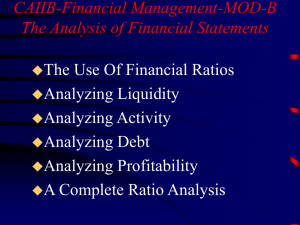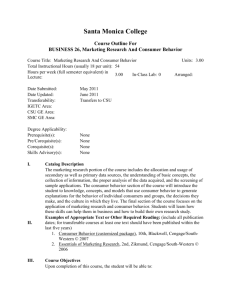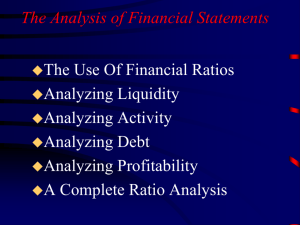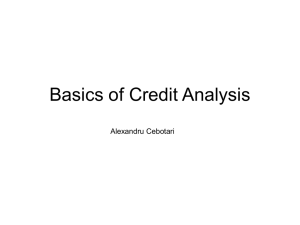MBA Financial Accounting Proficiency Study Guide (Based upon
advertisement
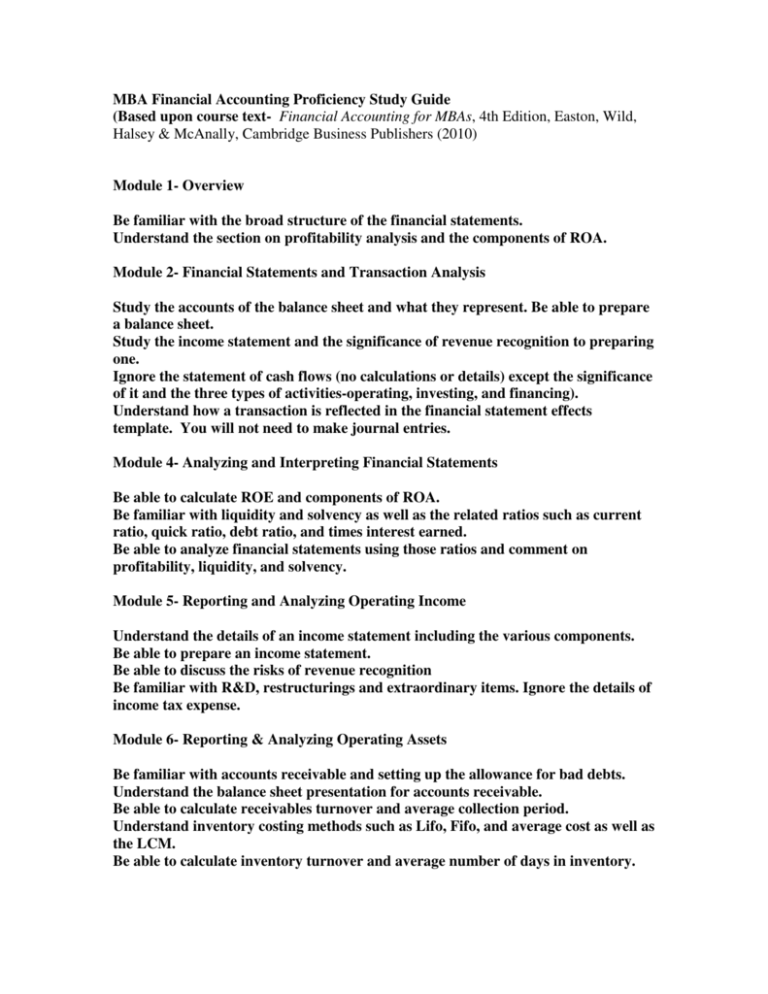
MBA Financial Accounting Proficiency Study Guide (Based upon course text- Financial Accounting for MBAs, 4th Edition, Easton, Wild, Halsey & McAnally, Cambridge Business Publishers (2010) Module 1- Overview Be familiar with the broad structure of the financial statements. Understand the section on profitability analysis and the components of ROA. Module 2- Financial Statements and Transaction Analysis Study the accounts of the balance sheet and what they represent. Be able to prepare a balance sheet. Study the income statement and the significance of revenue recognition to preparing one. Ignore the statement of cash flows (no calculations or details) except the significance of it and the three types of activities-operating, investing, and financing). Understand how a transaction is reflected in the financial statement effects template. You will not need to make journal entries. Module 4- Analyzing and Interpreting Financial Statements Be able to calculate ROE and components of ROA. Be familiar with liquidity and solvency as well as the related ratios such as current ratio, quick ratio, debt ratio, and times interest earned. Be able to analyze financial statements using those ratios and comment on profitability, liquidity, and solvency. Module 5- Reporting and Analyzing Operating Income Understand the details of an income statement including the various components. Be able to prepare an income statement. Be able to discuss the risks of revenue recognition Be familiar with R&D, restructurings and extraordinary items. Ignore the details of income tax expense. Module 6- Reporting & Analyzing Operating Assets Be familiar with accounts receivable and setting up the allowance for bad debts. Understand the balance sheet presentation for accounts receivable. Be able to calculate receivables turnover and average collection period. Understand inventory costing methods such as Lifo, Fifo, and average cost as well as the LCM. Be able to calculate inventory turnover and average number of days in inventory. Understand gross profit analysis Understand Lifo reserve and Lifo liquidations. Understand property, plant, and equipments and the concept of depreciation. Be most familiar with the straight line method and the difference between it and accelerated methods. Try to get a basic understanding of asset impairments. Read the section on footnote disclosures and analysis implications. Be able to use the material above to analyze financial statements in regard to operating assets. Module 7- Reporting and Analyzing Intercorporate Investments Be able to discuss the how the classification of securities impacts the income statement & balance sheet. Focus on passive investments only. Module 8 – Reporting and Analyzing Non-owner Financing Read and understand the section on current liabilities. Ignore accounts payable turnover. Read and understand the sections on accrued liabilities through current nonoperating liabilities. Be familiar with long-term nonoperating liabilities. You will not be asked to value a bond. Understand the reporting of debt and how to read a debt footnote. Be familiar with contingent liabilities. Ignore details of the ratios used by Moody’s/S&P except for the area covered in class for solvency (times interest earned & debt to equity). Module 9- Reporting and Analyzing Owner Financing Read and understand all major sections. Be familiar with the different classes of stock, stock repurchases, cash dividends, stock dividends, and stock splits. Read and understand the section on accumulated other comprehensive income. Ignore the section on equity carve outs, convertibles, etc.





